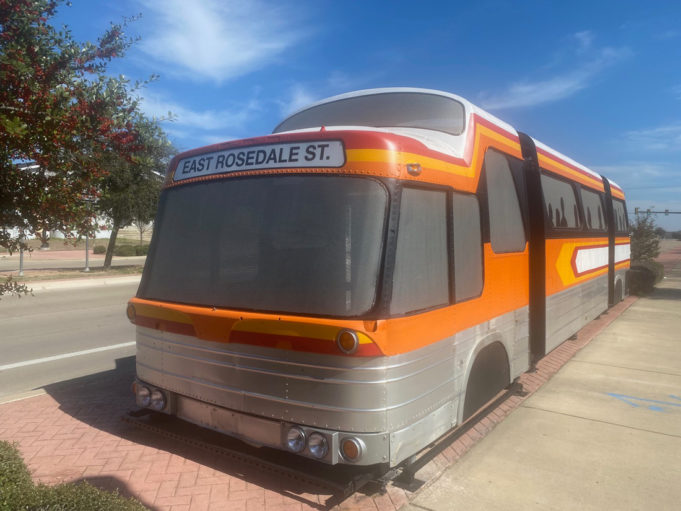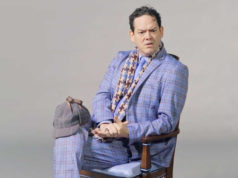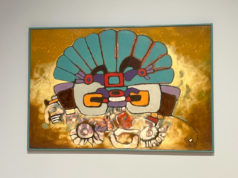Christopher Blay’s new, sleek, scholarly public artwork glides into the cultural dialogue about progress as effortlessly and elegantly as a sing-songy MLK speech — a pretty heady achievement considering the “East Rosedale Monument Project” is wheel-less and bolted to the sidewalk.
This refabricated public bus honors bussing’s role in the Civil Rights movement and specifically the desegregation of public schools. With the seats and floor removed and the exterior dissected longways, the monument combines text, image, and a kind of defiant inertia to achieve ignition. Inside, large panels of written history accompany archived black-and-white photos, while the profiled silhouettes of riders (contributed by KEEN/Kids Environmental Education Network Group) populate the metal meshing serving as the windows. Plus, a poem from Tarrant County’s 2023 youth poet laureate, April Pelton, scrolls across an LED display near the ceiling. Next stop: the crossroads where enlightened souls and bitter white folk meet.
This glorious, immersive knowledge bomb sits on East Rosedale Street on the historically Black South Side (right across the highway from the much less Black Near Southside). Fort Worth Public Art, the nonprofit that oversees hundreds of pieces throughout town and those yet to come, says the monument cost $282,543 to make, which I say is money well spent. I’ve been writing about Fort Worth art for over 20 years, and I can’t recall one piece of public art that’s not purely decorative generating as much press as the “East Rosedale Monument Project.” I don’t imagine Blay’s big personality and easygoing way exactly hampering the extent and copiousness of the coverage. And he deserves it. The monument has been nearly a decade in the making. (The wheels of public art grind slower than this stationary vehicle’s nonexistent ones.) The effect is emboldening, especially for something so heavy on scholarship and history in a time when madmen are trying to erase both. The “East Rosedale Monument Project” is great exactly where it is and could not work as a for-sale piece in any gallery — unless you know any millionaire Marxists.
The monument has a lot to say, figuratively and literally. America has always sucked at race relations, and while Obama’s landslide win brought us to a tipping point — “Racial equality is possible!” — the backlash is giving us racism unlike anything we’ve seen since some of the people in the photos adorning the monument were young. When the de facto president of the United States gives not one but two Nazi salutes and the mainstream media shrug, you know you’re going backward. Which is fine, because Blay’s monument is rolling forward. In deep-red Fort Worth, too. The artwork is not afraid of history. It embraces it. In so many ways, this bus is quite a coup.
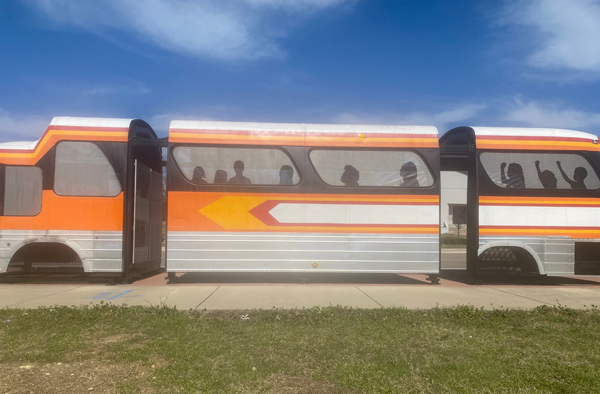
Photo by Abeeku Yankah
One of the first pieces I ever saw when I landed in town was a Blay. In an abandoned warehouse on the Near Southside (long before the neighborhood was gentrified), somehow — some dangerous how — Blay had hung empty ink bottles from the rafters at different lengths. I gave him props for that alone. I also loved his assorted time machines (installations of found objects like old dryer chairs), and Gallery 414 (R.I.P.) hosted a sprawling exhibit that brought third-world politics, photography, video, and Army men together for a highly esoteric but visually intriguing romp. After studying at TCU and under legendary Fort Worth photographer Peter Feresten, Blay will soon become director of public programs at the forthcoming National Juneteenth Museum in Fort Worth. He’s an artist of the highest order, and we’re lucky to have him and the “East Rosedale Monument Project.”
One thing I really love about public art is that it doesn’t have to be art-world referential. Unless you count other found-object refabricators, there’s really nothing like the monument. It’s not beautiful in any sense but is striking, memorable, hyper-modern. From a traditional, formic perspective, the red, orange, and yellow horizontal stripes along the side of the silver bus really make it pop against the drab, barren, grayish beige street. Philosophically, the suggestion of a long-gone Day-Glo age, when hope was always just around the corner, warps time itself. No one will save us now.
Individual resistance is key, and when an entire public art program — an entire city — is behind your now-subversive/formerly edutaining work, maybe all hope is not lost. Here’s some fuel. The “Grandmother of Juneteenth,” Fort Worthian Opal Lee appears in one of the panels carrying the banner for Fort Worth’s inaugural Martin Luther King Jr. parade in 1986. And Dr. Lee is still toting that message. There’s probably a meme out there talking about the same thing, but while a single raindrop isn’t much, enough of them can bring down a (white) house. The idea that small acts of rebellion can together topple a nascent autocracy is all we have, so cozy up to them. All aboard.
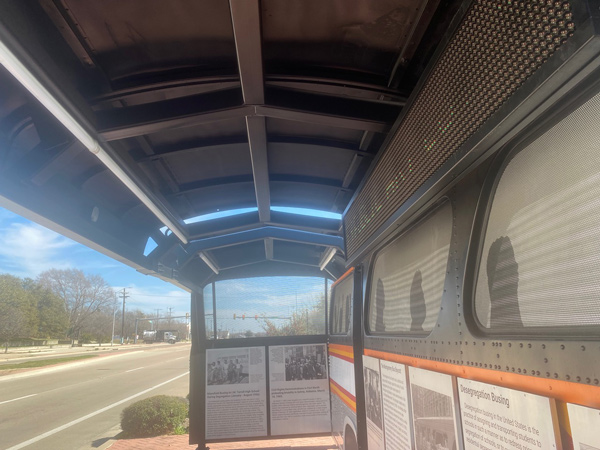
Photo by Abeeku Yankah
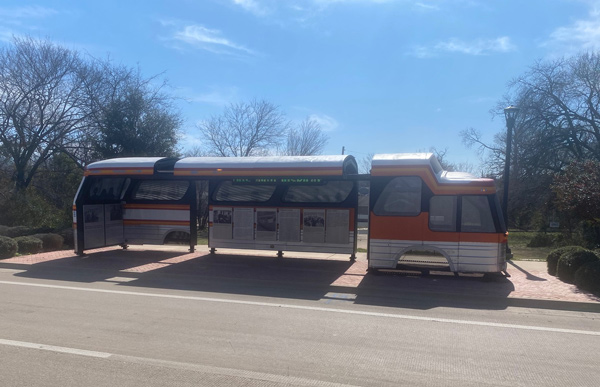
Photo by Abeeku Yankah
Black History Month is pretty much every month at our local Black-owned restaurants. Read about it in History Repeats Itself.



